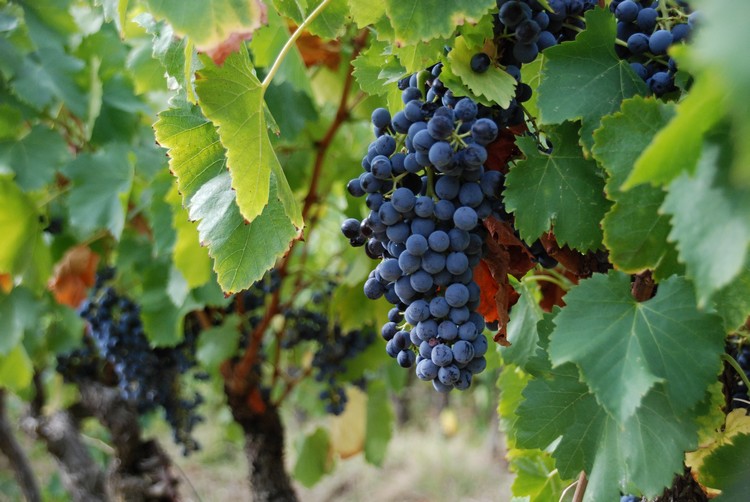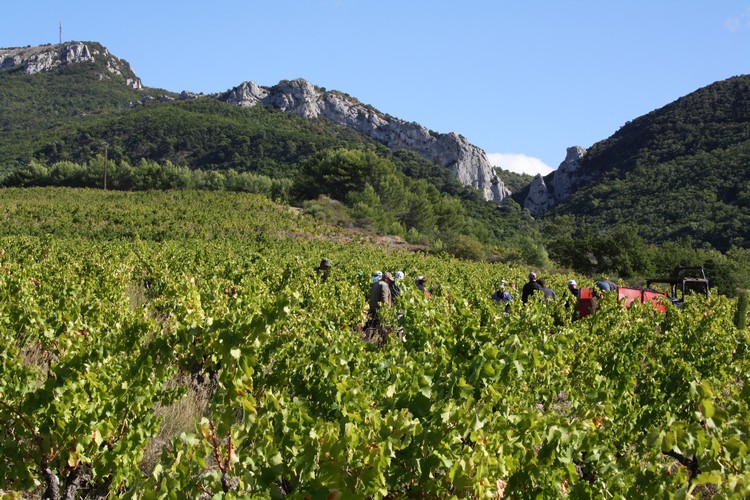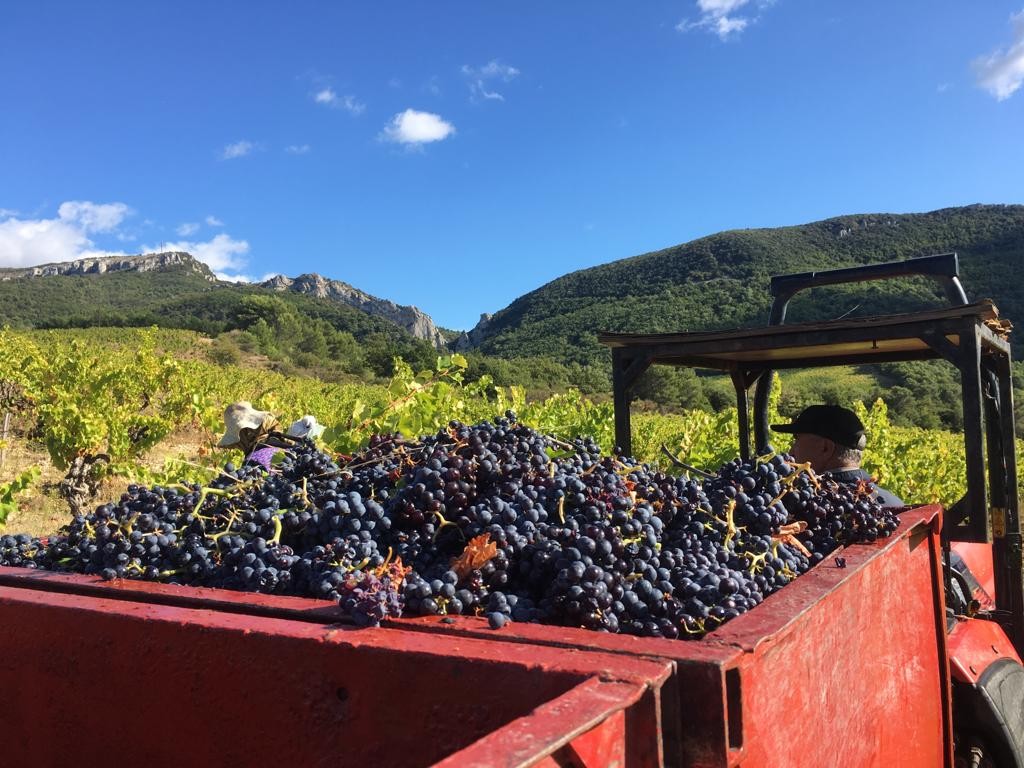Following the particularly rainy year 2018, this year we have found a more usual regional climate: feedback on the specificities of the past season.

Autumn 2018 is characterized by very abundant rainfall. It rained 328.1mm in October and November, compared to 152.2mm usually! From December onwards, the rain fell only occasionally, mainly due to the Mistral wind, which blew intensely throughout the season with a record of 119.9 km/h! The cumulative rainfall remained in deficit until the harvest.
In the beginning of 2019, because the months of February and March were particularly mild, we feared an early budburst of the vines. But the freshness of the altitude of our vineyard kept the buds closed longer. Thereafter, the cool, dry spring continued to delay the growing season. Flowering went well with a lot of bunches : it started at the end of May and lasted for 2 to 3 weeks. Grenache had a good fruit set this year.

The 2019 vintage will be characterized by a particularly hot and dry summer, marked by several heat waves – including a peak at 44.3°C at the end of June. These high temperatures caused localised damage, with isolated incidents of sunscald to both fruit and foliage on some vines in the plain. Despite the dryness of this vintage (no rain from June to September), the vines in Romane less suffered from water stress than in the plain. In the subsoil, the Cretaceous clays have retained the rains of last autumn. The sanitary condition of the vineyard remained impeccable throughout the season. The leaves have been green for a long time and we are only beginning to see the autumn colours settle in slowly.
This month of September, like those of the last four years, has maintained a mild weather, with increasing temperature variations between day and night. This has the effect of accelerating maturation. It is therefore necessary to remain vigilant to harvest grapes with a good balance between phenolic maturity and the sugar/acid ratio, especially since the size of the berries is historically low. The grapes are therefore very concentrated, with thick skins offering an interesting polyphenol potential. This year we find a good concentration of acids. The pulp is fleshy, suggesting wines with a lot of roundness on the palate. The probable alcohol have remained below the average of recent years, which is rather surprising for this hot summer year! All these factors reflect a good potential for wine quality!

We started harvesting in our Gigondas vineyard on September 7 with the plots for the Gigondas Romane Machotte rosé. We then harvested the Syrah from 16 September, followed by the Clairettes on 20 September, and we are on a “classic” harvest calendar, 3-4 days ahead of 2018 (which was a late vintage). Two rainfalls (35mm on September 22nd and 17mm on October 1st) brought some freshness and were good for the vines and juices. We then continued with the Grenache for our red Gigondas cuvées on September 23rd; the plots for our Gigondas Le Pas de l’Aigle were harvested from October 2nd. The harvest will end as every year with the Mourvèdre for the Domaine Grand Romane cuvée.
As the berries are small this year, we have increased the crushing, i.e. the bursting of the berries before putting them in vats, because they do not have much juice. This also prevents the release of sugars that remain in the berries after alcoholic fermentation during pressing.
The vats ferment slowly and in good conditions because the grapes have a good composition. This gives us time to work on the musts with pumping over and unbalasting when the alcohol level is still low so as not to extract the hard tannins too much. Indeed, alcohol is the main factor in the extraction of tannins. We then let the alcoholic fermentations end slowly with marc infusions – the alcohol then present would risk extracting too much tannin.
The tasting of the first juices shows a beautiful balance with a preserved acidity and present but supple tannins. Grenache is very expressive with notes of garrigue. The Syrah has kept a lot of acidity and has a mineral and tense profile. These first impressions will of course still evolve after the malolactic fermentations, which start easily this year, and after the ageing which will perfect the vintages! But all these elements already point to a very good potential for this vintage.






